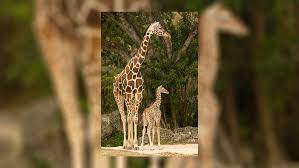The recent death of a baby giraffe at Zoo Miami has saddened both staff and visitors alike, shedding light on the inherent risks involved in caring for animals in captivity. Born on December 15th, the giraffe’s life was tragically cut short when it was discovered by zoo personnel with a broken neck on Saturday morning.
According to zoo spokesperson Ron Magill, the incident leading to the giraffe’s fatal injury occurred overnight and was not witnessed by staff. While the exact sequence of events remains unclear, it is speculated that the giraffe may have been startled, causing it to run into a fence and sustain the fatal injury. This tragic accident serves as a stark reminder of the unpredictable nature of wildlife, even in carefully managed environments like zoos.
A necropsy conducted following the giraffe’s death confirmed the presence of a broken neck, further underscoring the severity of the injury. The loss of any animal under human care is deeply distressing, prompting zoo officials to reevaluate existing safety protocols and procedures to prevent similar incidents in the future. As Magill emphasized, every effort is being made to ensure the well-being and safety of the remaining giraffes in the herd.
Zoo Miami has a long-standing commitment to conservation efforts, including the care and preservation of giraffes both in captivity and in the wild. With 60 giraffe births recorded at the zoo, it has played a significant role in giraffe conservation initiatives. Additionally, through the Zoo Miami Conservation Fund, the zoo has provided financial support to various organizations dedicated to giraffe conservation in their natural habitats.
Despite the tragedy, it is essential to acknowledge the dedication and expertise of zoo staff in their tireless efforts to care for and protect the animals under their charge. The loss of the baby giraffe serves as a sobering reminder of the inherent risks associated with wildlife management, prompting a renewed commitment to safety and welfare standards within the zoo community.
Moving forward, Zoo Miami will undoubtedly take proactive measures to prevent similar incidents, prioritizing the safety and well-being of all its animal residents. As Magill aptly stated, this tragic loss underscores the need for continuous evaluation and improvement of zoo practices to ensure the highest standards of care and protection for the animals entrusted to their care.
The death of the baby giraffe at Zoo Miami is a heartbreaking reminder of the fragility of life and the challenges inherent in caring for wild animals in captivity. While the circumstances surrounding the incident are tragic, it is hoped that valuable lessons will be learned, leading to enhanced safety measures and improved protocols to safeguard the welfare of zoo animals in the future.
